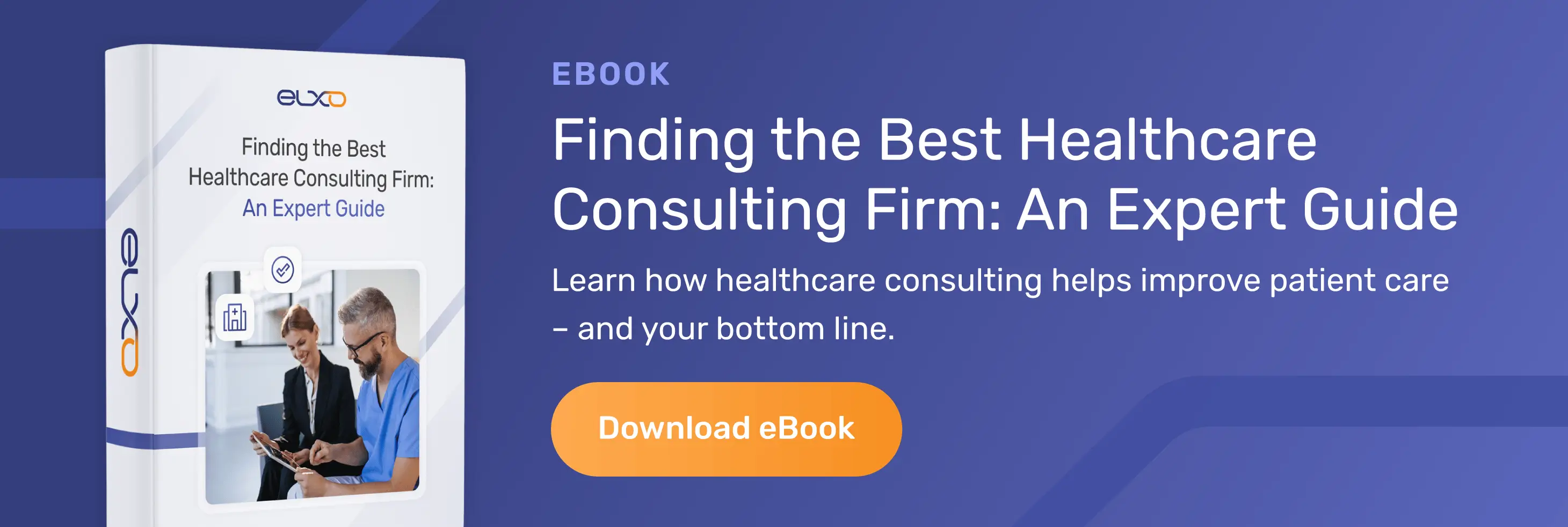Modern healthcare operations run on digital technologies — and healthcare software solutions make such innovations possible. To comprehensively support stakeholders across the care continuum, they address multiple aspects of care: patient experience, hospital staffing, administrative duties, IT, and more. No wonder healthcare leaders are constantly pulled in multiple directions when deciding on new software purchases.
Building operations staff may need software to reduce costs, physicians, nurses, and frontline workers want help making their lives easier and patient experiences better, and administrators eye processes that are more efficient.
Ultimately, decisions about purchasing and implementing new software fall on leaders and other executives who must balance their organization's demands with budgets and capabilities. Let’s dive into some key considerations.
Novel Healthcare Software Features
Some healthcare software solutions are nearly fundamental at this point. As of 2021, 78% of office-based physicians and 96% of non-federal acute care hospitals adopted a certified EHR (Electronic Health Record) program. Also, the COVID-19 pandemic got people comfortable with telehealth. A survey found that before the pandemic, 65% of respondents hadn’t used telehealth. Now, 43% say they will use it for 10% to 49% of their future appointments.
As digital tools become increasingly commonplace during care journeys, a few important healthcare software features to keep in mind when considering new solutions include:
-
EHR Integration :
Ensuring medical records can be accessed via multiple software solutions is critical within the healthcare ecosystem. With an integrated EHR environment, all medical practitioners can quickly access medical records, possibly improving care coordination between providers. Interoperability could also support more streamlined administrative and clinical workflows, since all data is stored in a secure, HIPAA-compliant space. And as patient-reported information is typically routed to these platforms, engagement and onboarding processes could improve as well.
-
Appointment scheduling and reminders:
Some effective healthcare software solutions can automate these traditionally manual and laborious processes, freeing providers and frontline staff to allocate more time to addressing patient needs. Programs that can schedule and keep track of appointments, send out reminders, manage cancellations and reschedule appointments, and streamline waiting times largely improve the overall patient experience.
-
Automated update notifications:
These have become essential ways to communicate with patients. They’re automated real-time messages that pop up on the patient’s mobile device, reminding them about appointments, medication schedules, fitness goals, or care-related information. With more consistent virtual assistance, users can better manage their health, healthcare providers can better monitor patients, and communication between both improves.
![]()
-
ePrescriptions and prescription tracking:
Taking the wrong medications or at improper doses can have life-threatening implications. EPrescribing software lets providers electronically file accurate, error-free, and understandable (no more trying to decipher a written script) prescriptions directly to the pharmacy — all while tracking apps enable hospitals, providers, and individuals to record the prescription fill, dosage, and medication frequency. Both apps prevent errors and improve patient safety and care.
-
Single, easy-to-use dashboards:
Healthcare facilities are awash in data — from patient care to operational information — and hospital staff need insights from myriad sources to effectively care for patients. A single dashboard captures, integrates, and visualizes real-time data and trends for easier analysis. Notably, such an interface can serve as the go-to source of truth for providers, staff, and leaders who need to make informed clinical and organizational decisions.
-
Analytics and reporting software:
Related to dashboards, these solutions pull in data from multiple sources, crunch it, and deliver insights, trends, and other data-driven information to help healthcare providers deliver high-quality care, support clinical outcomes, and engage their patients. For administrators and other executives, the information can help them strategize more efficient and less costly operations.
-
Reviews and ratings:
Relationships between providers and patients are crucially important for effective care delivery. This engagement between care teams and those they treat directly impacts what every administrator closely monitors to understand their organization’s reputation: ratings and reviews. Software on a website or a mobile app that offers patients a way to give feedback about their care and experiences can help providers and leaders see where they’re succeeding and where they can improve.
-
Health trackers and symptom checkers:
Information is the lifeblood of healthcare. The more a provider knows about the patient and their condition, the easier it is to diagnose and create a treatment plan. Health trackers are mobile apps patients use to record and manage their lifestyles and measure progress toward healthier living. Symptom checkers record a patient’s symptoms. Together, they give providers more accessible real-time insights about their patients — and let patients take more control over their care journeys.
-
Telehealth options:
There are multiple forms of telehealth, but the most widely known variation is the two-way video interaction between provider and patient. With virtual access to providers, patients (particularly those in remote communities) get quicker access to care, as well as more convenient consultations with reduced stress and cost (no parking or gas expenses). Providers may see better outcomes among their patient populations, fewer hospital re-admissions, improved patient engagement and satisfaction, and fewer cancellations.
-
Complex care management:
Some care journeys require a visit to the doctor and a swift recovery at home. Others, like chronic conditions, can involve multiple providers, routine appointments, and more robust ongoing treatment plans. Recent innovations — such as patient outreach software — aims to assist with these more complicated pathways by simplifying and automating various aspects of remote patient engagement. On the clinician side, many of these technologies streamline data collection and organize information to equip care teams with real-time insights for improved patient monitoring.
These are among the most widely used features in healthcare software solutions. So, what’s the best way to access them? Build an application yourself? Choose a third-party developer? Use custom software? The first option can be expensive — there is a development team to pull together, infrastructure, and the need to ensure compliance with HIPAA (Health Insurance Portability and Accountability Act) and other regulations. Plus, 70% of hospital-led IT projects either fail or encounter significant challenges.
Go With a Healthcare Software Development Company
One option is to partner with a custom healthcare software development services company like Elxo. Elxo has the experts and resources to manage the complexities of developing custom healthcare software, as well as ensuring that it’s secure and complies with federal and state requirements. It’s also financially reasonable. A six-month project completed in-house can cost as much as $388,000. The same job done by a healthcare software development company will come in at about $200,000.
Additionally, an experienced custom healthcare software development services partner can save healthcare facilities time and money by creating flexible solutions that can be used across multiple use cases, a capability that can make complex IT environments found in hospitals easier to navigate.
Want to see how Elxo can develop a custom healthcare software solution for your organization? Speak with one of our experts.

.jpg)




